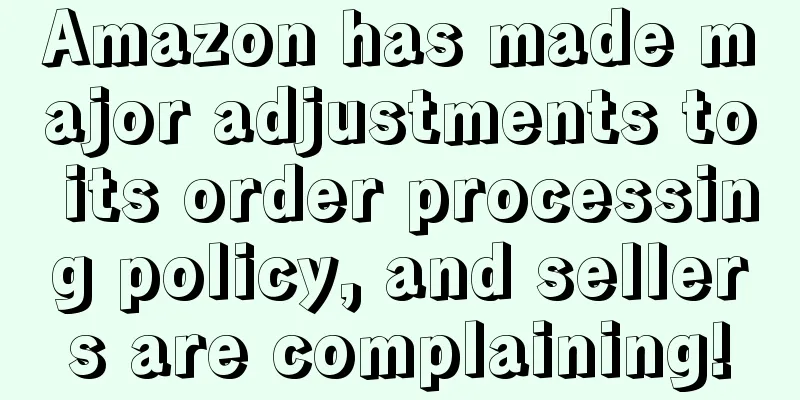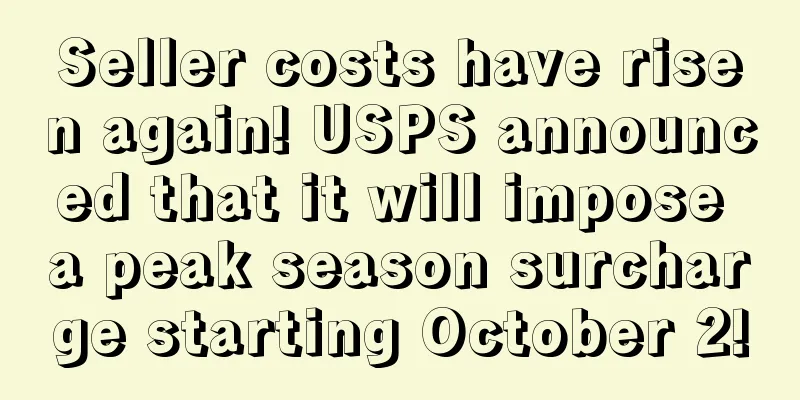Amazon has made major adjustments to its order processing policy, and sellers are complaining!

Some sellers pointed out that the average daily order processing volume within 30 days is not equivalent to the actual number of orders that can be processed on a certain day . Changes in the market environment will affect the seller's fulfillment ability, and it is absurd to let Amazon, which does not understand its own situation, decide how many orders they can process every day. Another seller believes that this is tantamount to forcing sellers to roll inward in disguise, increasing the daily order processing volume in order to raise the threshold . Under this mechanism, sellers will be compared with each other, and merchants with stronger processing capabilities will receive more traffic and orders, while small sellers may be completely crushed. 02 Pros and Cons of the New Regulations and Countermeasures Amazon's automatic minimum threshold adjustment for order processing capacity does help optimize the overall fulfillment system and improve customer experience in the long run, but in the short term, it has imposed certain restrictions on sellers' flexibility. In particular, sellers with large order fluctuations need to plan their operating strategies in advance to ensure that they can adapt to the new adjustment rules. Amazon front desk displays the arrival date
The implementation of this new regulation may bring about changes in the market structure. Sellers need to keep up with platform adjustments and rationally plan operational strategies to ensure the sustainable growth of their own businesses. |
>>: DeepSeek is a big hit! Amazon's best sellers have used it to run their operations
Recommend
What is Weebly? Weebly Review
Weebly is a free self-service website building ser...
What is CCC? CCC Review
CCC stands for China Compulsory Certification, whi...
These actions of Amazon sellers may lead to account suspension!
There are many reasons why Amazon seller accounts ...
The US economic growth rate continues to slow down! The "layoff wave" spreads to the retail industry
It is learned that due to the impact of the Feder...
UPS and other carriers extend peak season surcharges, holiday shipping costs surge
It is learned that on December 3, according to for...
What is Xiaolaoban ERP? Xiaolaoban ERP Review
Small Boss ERP is a free professional foreign trad...
What is Asia Union International Payment? Asia Union International Payment Review
Founded in 2015 and headquartered in Hong Kong, As...
Recommended: 5 Amazon product selection analysis tools commonly used by overseas sellers
Amazon sellers, are you worried that no one is in...
"Black Myth: Wukong" has taken the world by storm, with a large number of sellers launching new products to "take advantage of the popularity"!
“ The game version of Destiny: embark on the journ...
What is GittiGidiyor? GittiGidiyor Review
GittiGidiyor was founded in 2001 and is a Turkish ...
Walmart launches 'visual search' tool to search for related products based on images
It is learned that on December 8, Walmart announce...
Etsy's first quarter financial report released! 7 million new buyers
It is learned that on May 4, Etsy announced its fi...
Uncovering the secrets of Amazon advertising: understanding the logic and achieving twice the result with half the effort
Amazon offers sellers a variety of advertising for...
What is IMforSMB? IMforSMB Review
IMforSMB is a search tool website that can help us...
Operation: How to operate Facebook community to bring more traffic to the store?
Want to increase your Facebook group conversion r...









